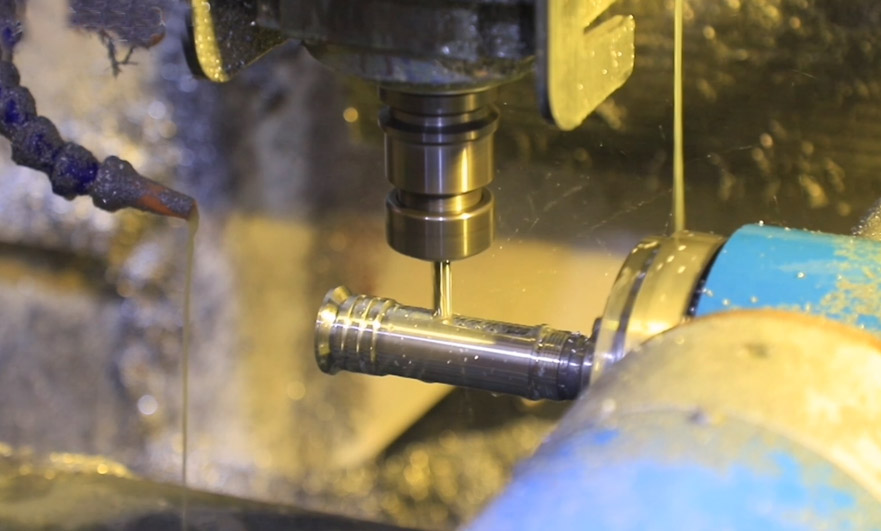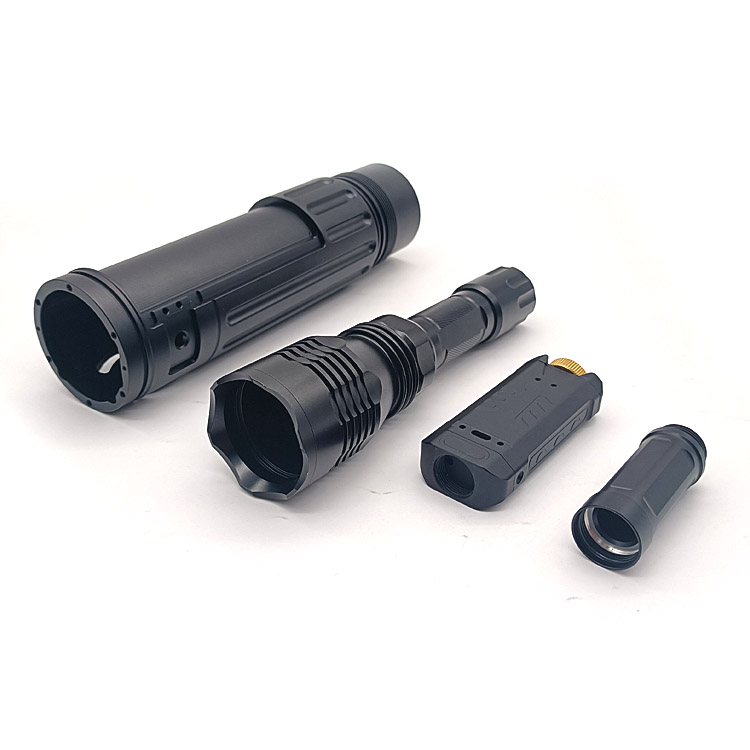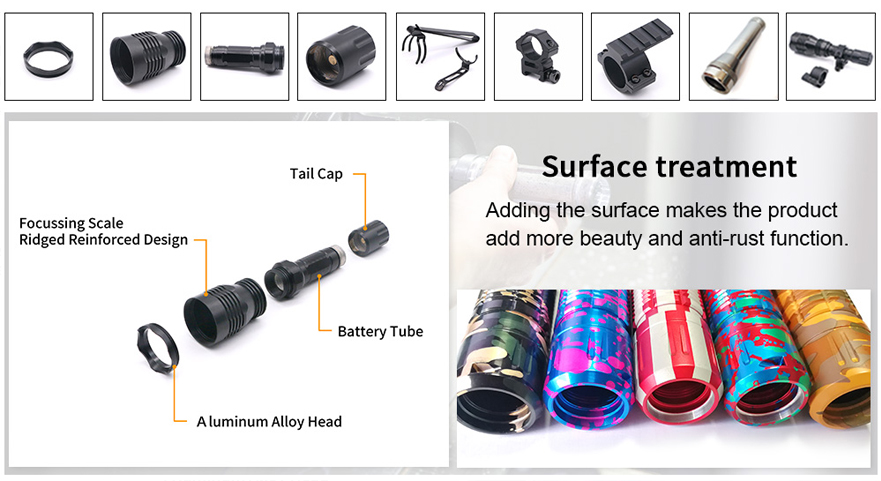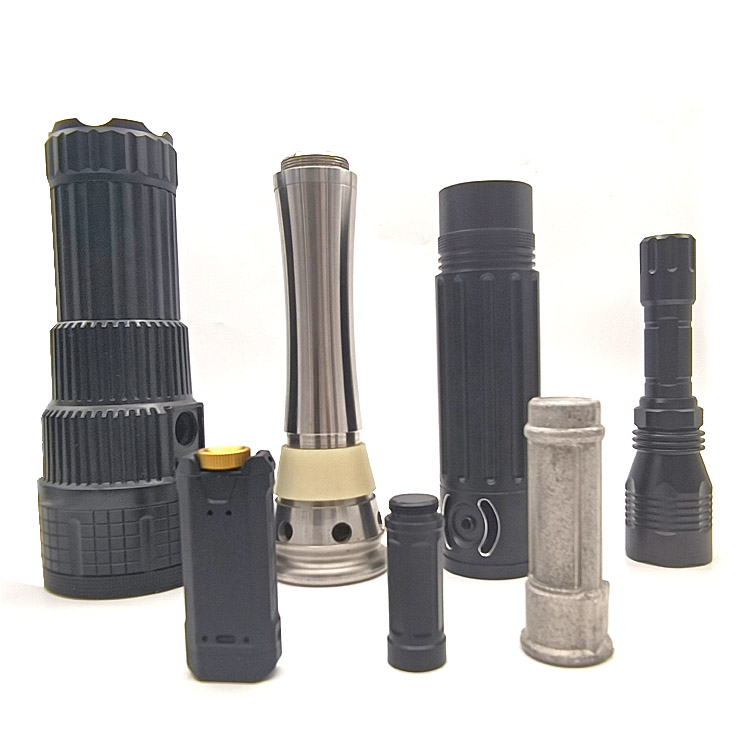15 years one-stop China custom CNC machining parts factory

Hey there I’m VMT Sam!
With 25 years of CNC machining experience we are committed to helping clients overcome 10000 complex part-processing challenges all to contribute to a better life through intelligent manufacturing. Contact us now
 141 |
Published by VMT at Jul 27 2022
141 |
Published by VMT at Jul 27 2022
With the continuous development of the flashlight industry, more and more attention has been paid to the design of the flashlight housing and the application of materials. To make a good flashlight housing, we must first understand the purpose of the designed product, the use environment, the type of shell, the light effect, the shape, the cost, etc. Wait.
When choosing a flashlight, the flashlight housing is also a very important part. According to the different materials of the flashlight shell, the flashlight can be divided into plastic flashlight housingand metal flashlight shell, and metal flashlight housingis divided into aluminum, copper, titanium, stainless steel and so on.
The following will introduce the difference between plastic flashlight casings and metal flashlight casings:
Plastic
Advantages: light weight, can be manufactured by mold processing, low manufacturing cost, easy or no surface treatment, the shell has excellent corrosion resistance, especially suitable for diving and other fields.
Disadvantages: The heat dissipation is very poor, and it can hardly be completely dissipated, so it is not suitable for high-power flashlights.
Today, except for some low-end daily flashlight casings, professional flashlight casings basically exclude this material.
Metal
Advantages: It has excellent thermoplasticity, corrosion resistance, high strength, good heat dissipation, and can not deform at high temperature, and can be processed by CNC to manufacture complex structures.
Disadvantages: high cost of raw materials and machining, heavy weight, surface treatment is generally required.

Common flashlight housingmetal materials:
1. Aluminum: Aluminum alloy is the most commonly used flashlight housing material.
Advantages: easy to polish, not easy to rust, light weight, good plasticity, relatively easy CNC machining, good wear resistance and color can be obtained after anodizing on the surface of the flashlight shell.
Defects: low hardness, afraid of collision, easy to deform.
Most of the assembled flashlight housing are made of AL6061-T6 aluminum alloy material. 6061-T6 is also known as aviation hard aluminum. It is light and has high strength, high production cost, good formability, good corrosion resistance, and good oxidation effect.

2. Copper: commonly used to make laser flashlight casings or limited edition flashlight casings.
Advantages: It has excellent heat dissipation, good ductility, and extremely low resistivity. It is a very durable metal shell material that can be cycled repeatedly without damaging its mechanical properties.
Disadvantages: heavy weight, easy oxidation, difficult surface treatment, difficult to obtain high hardness, generally the surface treatment of the flashlight housingis mainly electroplating, spray painting or baking paint.
3. Titanium: aerospace metal, which can reach the strength of steel at a density comparable to that of aluminum, has a high degree of bioaffinity, and is highly resistant to corrosion.
Disadvantages: CNC machining is extremely difficult, expensive, heat dissipation is not good, surface chemical treatment is difficult, but after nitriding treatment, a very hard TiN film can be formed on the surface, HRC hardness cannot reach more than 80, surface chemical treatment more difficult. In addition to nitrogen, other surface treatments can be done to change its shortcomings such as poor thermal conductivity.
4. Stainless steel: Stainless steel has attracted the attention of many people because it does not require surface treatment, is relatively easy to CNC process, and has better retention.
Stainless steel also has its own shortcomings: high density, heavy weight, and poor heat conduction resulting in poor heat dissipation. In terms of surface treatment, chemical treatment is generally not required, mainly physical treatment, such as wire drawing, matte, mirror, sandblasting, etc.
The more commonly used CNC machining process for flashlight casings is to use aluminum, and then anodized surface treatment. After anodized surface treatment, it can achieve very high hardness, but it is only a very thin surface layer, which is not resistant to bumps, and is relatively wear-resistant for daily use.

Some machining methods of aluminum materials:
A. Ordinary oxidation: It is relatively common on the market. Almost all the flashlight housing sold online are ordinary oxidants. This treatment can cope with the general use environment, but over time, the flashlight housingwill appear rusted and yellowed.
B. Hard oxidation: that is, adding a layer of treatment to ordinary oxidation, its performance is slightly better than ordinary oxidation.
Three-level hard oxygen: the full name is triple hard oxygen, which is what I want to emphasize today. Tertiary cemented carbide, also known as military regulation III (HA3), its properties mainly make the metal it protects wear-resistant. The 6061-T6 aluminum alloy material used in the Hengyou series has been treated with three-stage hard oxidation and protected by three-stage hard oxidation. It is less likely to scratch off the paint when you use a knife or scrape or grind it than other coatings.

What are the advantages of CNC machining aluminum flashlight housing compared with our peers?
Many aluminum flashlight housing are processed by CNC. Its appearance and color can be selected in a variety of ways, with fast heat dissipation and high metal texture. It has become the CNC machining method chosen by many high-end flashlights. What are the advantages of our processing and peers:
1. The appearance structure is complex and the three-dimensional effect is full. The materials used in our CNC machining are all customized materials, and there will be no material lines on the surface of the aluminum flashlight shell.
2. 15 kinds of surface treatment processes, such as: multi-color oxidation, etching, electrophoresis, etc. We have a high production yield, because we have detailed experience in process control. There are also cases of these surface treatment samples, but due to the signed non-disclosure agreement, pictures and videos cannot be external. If you want to know more, please contact us, we will arrange an online meeting to discuss with you.
3.40 kinds of material choices, can process aluminum, titanium, copper, stainless steel, etc. There are various problems with various materials, but we have CNC machined flashlight housing of various materials, and we have encountered various problems, and we have corresponding solutions.
4. The effect of CNC machining technology is high. Many CNC machining factories use 5-axis CNC machining slowly because they cannot control the size. We choose 4-axis to process many pieces at one time, which is highly efficient.
5. There are flashlight housingcustomers who have cooperated for many years. Because it is inconvenient to disclose, the company name is not mentioned here. If you want to know more, you can contact us at any time.
If you are looking for a manufacturer of CNC machining flashlight housing, you may choose VMT to give it a try, contact us, and you can get the answer you want in a few minutes.
Ready To Start Your Next Project?
Get Instant Quote

Request a Free Quote
Send us a message if you have any questions or request a quote. We will get back to you ASAP!